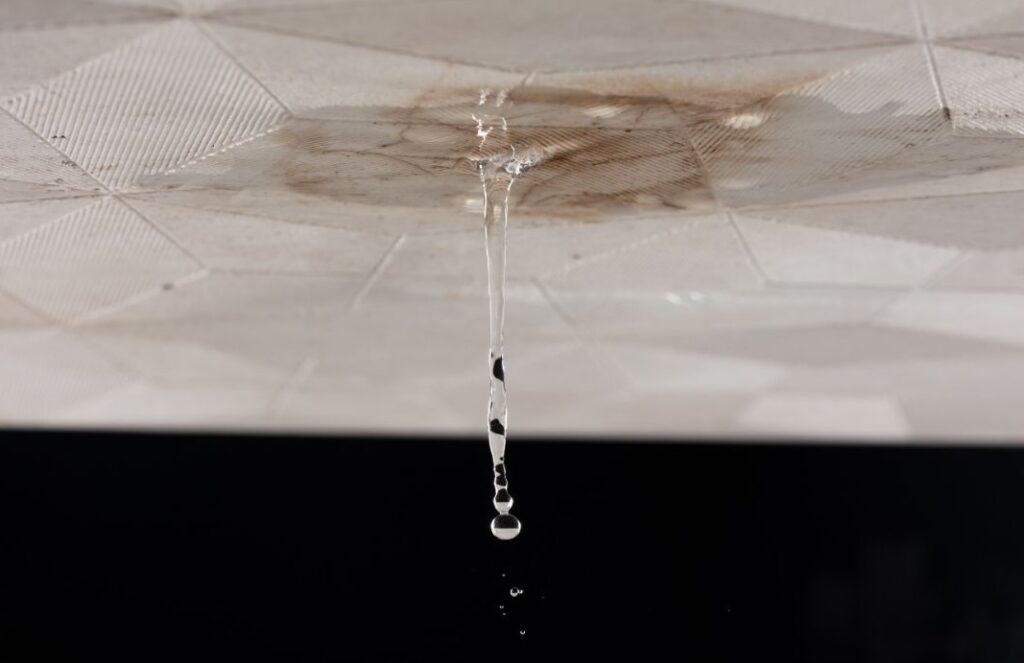Specialist Office Block Flat Roofing Systems
Experts in flat roofing systems for office blocks with over 30 years of experience.
Experts in flat roofing systems for office blocks with over 30 years of experience.














Leaks in an office block can cause disruption, damaging ceilings, walls, and equipment. Pooling water, worn membranes, or blocked drainage can lead to bigger problems if ignored.
Prompt attention helps maintain a safe, watertight environment for tenants and staff, preventing downtime and extending the roof’s lifespan with expert support from AAC Flat Roofing.

A sustainable option for office buildings, combining vegetation with waterproofing layers, improving insulation, reducing rainwater runoff, enhancing biodiversity and creating attractive, functional rooftop spaces for staff wellbeing.
A seamless, cold-applied waterproofing system suitable for office roofs with complex details, offering rapid installation, minimal disruption, excellent flexibility and long-term protection while accommodating rooftop plants.
A lightweight, durable membrane system ideal for office blocks, offering quick installation, cost efficiency, low maintenance and strong weather resistance, particularly suited to large flat roofs.
Book a free site survey with AAC Flat Roofing and benefit from over 30 years of experience in commercial flat roofing.
Our team will assess your office block roof with no obligation. Our survey helps identify potential issues early, saving time and cost while ensuring the best solution for long term protection and performance.
When water regularly finds its way inside, the roof stops performing. Repeated leaks cause damage to the structure and interiors, encourage mould growth, create health risks and lead to rising repair bills.
Water that remains on the surface for more than two days highlights drainage or structural issues. This standing water gradually weakens materials, increases leak risks, adds excess load and reduces roof longevity.
Defects in the roofing membrane compromise waterproofing, leaving the building open to rainwater entry. Small cracks and blisters soon spread, creating weaknesses, higher maintenance costs and significant structural issues.
Visible signs of ageing such as fading, brittleness and surface erosion suggest the roof is approaching the end of its service life. Performance declines, reducing energy efficiency, protection and overall long-term reliability.
Separated seams allow water to penetrate between layers of the roofing system. Expansion and contraction with weather conditions make matters worse, leading to insulation problems, wasted energy and faster overall deterioration.
A roof requiring frequent patching quickly becomes uneconomical to maintain. Constant repair work highlights underlying failure, drives up operational costs, disrupts business activity and raises the likelihood of major water ingress.
They allow easy installation of air conditioning units and solar panels, improve accessibility for maintenance teams, and create a sleek, modern appearance. Flat roofs also offer energy efficiency when insulated correctly and can be installed with durable waterproof membranes that last many years.
The most common warning signs include persistent leaks, pooling water that remains for days, cracks or blisters in the surface, and seams that have become loose. Aged materials can appear brittle and may no longer provide adequate waterproofing. Rising repair bills and repeated callouts for patching usually suggest the roof has reached the end of its service life.
Standing water adds unnecessary weight, damages materials, and increases leak risks. Even shallow pools can harm insulation and encourage algae. Regular checks after heavy rainfall ensure outlets remain clear and drainage functions correctly, reducing disruption for tenants and extending the lifespan of the roofing system.
Surveyors examine access routes, delivery logistics, and safety concerns around pedestrian and vehicle areas. Proper planning ensures equipment and materials reach the roof safely, minimises disruption for staff and tenants, and allows contractors to position scaffolding or machinery effectively for efficient and safe installation.
A full level roofing survey is a comprehensive inspection of an office block’s roof. Specialists check membranes, insulation, seams, flashing, and drainage while identifying signs of damage or water ingress. Core samples may also be taken.
The lifespan of a flat roofing system on an office block is generally between 20 and 30 years, depending on the material chosen. Weather conditions, building location, and maintenance frequency all influence longevity.
we’ll get back to you as soon as possible